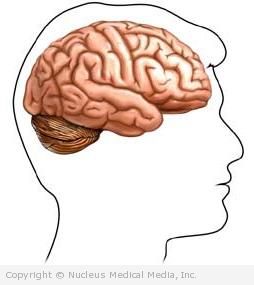Self-mutilation
(Self-injury; Self-harm)
Self-mutilation – Definition
Self-mutilation or self-injury is any form of self-harm inflicted on your body without the intent to commit suicide. Self-mutilation is a compulsive act that may be performed to release emotional pain, anger, or anxiety; to rebel against authority; to flirt with risk-taking; or to feel in control. In some cases, the behavior is outside your emotional control and related to a neurological or metabolic disorder.
The behavior is not considered socially appropriate. It is also not part of a religious custom or a form of art.
Self-mutilation – Causes
Self-mutilation is a severe impulse control disorder that is often associated with other psychiatric disorders, such as:
- Borderline personality disorder (most common)
- Depression
- Substance abuse ( alcoholism or drug abuse)
- Eating disorders ( anorexia or bulimia)
- Psychosis
- Antisocial personality disorders
- Post-traumatic stress disorder

It can also be associated with neurologic or metabolic disorders such as:
- Syringomyelia (a disorder where cysts form on the spinal cord)
- Tourette syndrome (a neurological disorder)
- Autism (a disorder that results in social, behavioral, and language problems)
- Lesch-Nyhan syndrome (a genetic disorder)
Self-mutilation – Risk Factors
These factors increase your chance of developing this condition. Tell your doctor if you have any of these risk factors:
- Childhood sexual, physical, or emotional abuse
- Violence or other abusive relationships in childhood home
- Post-traumatic stress disorder
- Being in prison
- Sex: female
- Age: adolescence
- Intellectual disability
- Autism
- Certain metabolic disorders
Self-mutilation – Symptoms
The symptoms of self-mutilation vary. The most common symptoms include:
- Cutting of skin with a sharp object (most common)
- Skin carving or burning
- Self-punching or scratching
- Needle sticking
- Head banging
- Eye pressing
- Finger, lips, or arm biting
- Pulling out one’s hair
- Picking at one’s skin
Rarely, in very severe cases, self-mutilation can include:
- Broken bones
- Amputation
- Castration
- Suicide
Self-mutilation – Diagnosis
Self-mutilation can be difficult to diagnose. People who self-mutilate often feel guilty and ashamed about their behavior and may try to hide it. A doctor may first see the physical harm caused by self-mutilation. To be diagnosed, symptoms should meet the following criteria:
- Preoccupation with physically harming oneself
- Inability to resist self-injurious behavior resulting in tissue damage
- Increased tension before and a sense of relief after self-injury
- Having no suicidal intent in the self-mutilation
To make an accurate diagnosis, the psychologist or psychiatrist will assess other conditions, like personality or mood disorders, and whether there is suicidal intent.
Self-mutilation – Treatment
Treatment usually includes medical and psychological treatment, as well as medications.
Medical Treatment
A doctor will assess whether care needs to be provided immediately to prevent further harm due to ingestion, wound, or other bodily harm.
Psychosocial Assessment
This assessment may be administered to assess a person’s mental capacity, level of distress, and presence of mental illness.
Psychologic Treatment
Psychologic treatment may be done either one-to-one or in a group setting. It is usually aimed at finding and treating the underlying emotional difficulty, trauma, or disorder. It may also include cognitive behavioral therapy.
Medications
Medications used include:
- Antidepressants
- Antipsychotics
- Mood regulators
- Anticonvulsants
Self-mutilation – Prevention
The best preventative measure is to get help as soon as possible for depression, trauma, emotional problems, or other disorders that may lead to self-mutilation.

